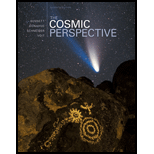
The Cosmic Perspective
7th Edition
ISBN: 9780321839558
Author: Jeffrey O. Bennett, Megan O. Donahue, Nicholas Schneider, Mark Voit
Publisher: Addison-Wesley
expand_more
expand_more
format_list_bulleted
Concept explainers
Textbook Question
Chapter 9, Problem 2EAP
Summarize the processes by which planetary interiors get hot and cool off. Why do large planets retain internal heat longer than smaller planets?
Expert Solution & Answer
Want to see the full answer?
Check out a sample textbook solution
Students have asked these similar questions
3
Set
ба
||Axl
49.32
6b
71
Ay
22
Magnitude of A
Angle of A
24.04
Angle of -A
22
54
155.96
° (pos Ax) 204.04
° (neg Ax) 335.96
°
(pos Ax)
° (neg Ax)
115.77
° (pos Ax) 295.77
° (pos Ax)
-39
81
208.78
° (neg Ax) 28.78
°
(neg Ax)
3AA . not sure what i am getting wrong
Chapter 9 Solutions
The Cosmic Perspective
Ch. 9 - Prob. 1VSCCh. 9 - Use the following questions to check your...Ch. 9 - Use the following questions to check your...Ch. 9 - Use the following questions to check your...Ch. 9 - Describe the core-mantle-crust structures of the...Ch. 9 - Summarize the processes by which planetary...Ch. 9 - Why does Earth have a global magnetic field? Why...Ch. 9 - Define each of the four major geological...Ch. 9 - Prob. 5EAPCh. 9 - Why is the Moon so much more heavily cratered than...
Ch. 9 - Summarize the ways in which a terrestrial world’s...Ch. 9 - Briefly summarize the geological history of the...Ch. 9 - Briefly summarize the geological history of...Ch. 9 - Choose five features on the global map of Mars...Ch. 9 - Why isn’t liquid water stable on Mars today, and...Ch. 9 - Choose at least three major geological features of...Ch. 9 - What evidence tells us that Venus was “repaved”...Ch. 9 - Describe the conveyor-like action of plate...Ch. 9 - Briefly explain how each of the following...Ch. 9 - To what extent do we think the geologies of the...Ch. 9 - Surprising Discoveries? Suppose we were to make...Ch. 9 - Prob. 18EAPCh. 9 - Prob. 19EAPCh. 9 - Surprising Discoveries? Suppose we were to make...Ch. 9 - Prob. 21EAPCh. 9 - Prob. 22EAPCh. 9 - Prob. 23EAPCh. 9 - Prob. 24EAPCh. 9 - Prob. 25EAPCh. 9 - Prob. 26EAPCh. 9 - Prob. 27EAPCh. 9 - Surprising Discoveries? Suppose we were to make...Ch. 9 - Prob. 29EAPCh. 9 - Choose the best answer to each of the following....Ch. 9 - Choose the best answer to each of the following....Ch. 9 - Choose the best answer to each of the following....Ch. 9 - Prob. 33EAPCh. 9 - Choose the best answer to each of the following....Ch. 9 - Choose the best answer to each of the following....Ch. 9 - Choose the best answer to each of the following....Ch. 9 - Choose the best answer to each of the following....Ch. 9 - Prob. 38EAPCh. 9 - Mars Attracts. William Herschel, Giovanni...Ch. 9 - Prob. 40EAPCh. 9 - Prob. 41EAPCh. 9 - Prob. 42EAPCh. 9 - Prob. 43EAPCh. 9 - Prob. 44EAPCh. 9 - Prob. 45EAPCh. 9 - Prob. 46EAPCh. 9 - Prob. 47EAPCh. 9 - Prob. 48EAPCh. 9 - Prob. 49EAPCh. 9 - Prob. 50EAPCh. 9 - Be sure the show all calculations clearly and...Ch. 9 - Prob. 52EAPCh. 9 - Prob. 53EAPCh. 9 - Prob. 54EAPCh. 9 - Be sure the show all calculations clearly and...Ch. 9 - Prob. 56EAPCh. 9 - Be sure the show all calculations clearly and...Ch. 9 - Worth the Effort? Politicians often argue over...Ch. 9 - Prob. 59EAPCh. 9 - Prob. 60EAPCh. 9 - Prob. 61EAPCh. 9 - Prob. 62EAPCh. 9 - Prob. 63EAP
Knowledge Booster
Learn more about
Need a deep-dive on the concept behind this application? Look no further. Learn more about this topic, physics and related others by exploring similar questions and additional content below.Similar questions
arrow_back_ios
SEE MORE QUESTIONS
arrow_forward_ios
Recommended textbooks for you
 AstronomyPhysicsISBN:9781938168284Author:Andrew Fraknoi; David Morrison; Sidney C. WolffPublisher:OpenStax
AstronomyPhysicsISBN:9781938168284Author:Andrew Fraknoi; David Morrison; Sidney C. WolffPublisher:OpenStax
 An Introduction to Physical SciencePhysicsISBN:9781305079137Author:James Shipman, Jerry D. Wilson, Charles A. Higgins, Omar TorresPublisher:Cengage Learning
An Introduction to Physical SciencePhysicsISBN:9781305079137Author:James Shipman, Jerry D. Wilson, Charles A. Higgins, Omar TorresPublisher:Cengage Learning Horizons: Exploring the Universe (MindTap Course ...PhysicsISBN:9781305960961Author:Michael A. Seeds, Dana BackmanPublisher:Cengage Learning
Horizons: Exploring the Universe (MindTap Course ...PhysicsISBN:9781305960961Author:Michael A. Seeds, Dana BackmanPublisher:Cengage Learning Foundations of Astronomy (MindTap Course List)PhysicsISBN:9781337399920Author:Michael A. Seeds, Dana BackmanPublisher:Cengage Learning
Foundations of Astronomy (MindTap Course List)PhysicsISBN:9781337399920Author:Michael A. Seeds, Dana BackmanPublisher:Cengage Learning

Astronomy
Physics
ISBN:9781938168284
Author:Andrew Fraknoi; David Morrison; Sidney C. Wolff
Publisher:OpenStax


An Introduction to Physical Science
Physics
ISBN:9781305079137
Author:James Shipman, Jerry D. Wilson, Charles A. Higgins, Omar Torres
Publisher:Cengage Learning

Horizons: Exploring the Universe (MindTap Course ...
Physics
ISBN:9781305960961
Author:Michael A. Seeds, Dana Backman
Publisher:Cengage Learning

Foundations of Astronomy (MindTap Course List)
Physics
ISBN:9781337399920
Author:Michael A. Seeds, Dana Backman
Publisher:Cengage Learning

General Relativity: The Curvature of Spacetime; Author: Professor Dave Explains;https://www.youtube.com/watch?v=R7V3koyL7Mc;License: Standard YouTube License, CC-BY